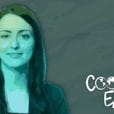“This is just too well-established to follow the journalism practice of having both sides. I don’t have to bring in someone to debate gravity, it’s the same here… The idea that there are two sides is a carefully cultivated lie.”
This week on the podcast is John Schwartz, a science writer for The New York Times, focusing on climate change; he provides us with a look into the editorial and journalistic process of covering climate change, which is the story of our lifetime. The New York Times, like many other institutions, has made deliberate decisions around this coverage, which includes tossing out the idea that there are two sides to this story, and the pressing need to include multimedia and creative visuals to attract new audiences.
The New York Times has been at the forefront of climate coverage and has increasingly used multimedia, photography, data visualization and storytelling to help make these stories real for people and to reach new audiences. “I don’t need to reach the advocates, they already know. But if someone who would otherwise would not be reading about climate change is grabbed by one of our stories, and therefore begins to engage with the issue, we have done our jobs,” John tells me.
It is especially great to speak with someone who has been working to communicate some of the most complex and difficult issues, and still remains committed to finding the truth while also conveying the hope and possibility still facing us.
“When I talk to climate scientists, what strikes me is not their sense of hopelessness. In fact, the people who know the most about this, are at many levels still hopeful, because they understand how we got here, and they know that it is possible to remediate or mitigate it. They are frustrated by the lack of action on the issue, but they do not see a sense of doom, like we are falling off a cliff, they see it as sliding down a slope that conceivably we can drag ourselves back up from.”
We also talk about the current political climate, and the increasing attacks on the media, as well as “fake news”. Specifically, we also talk about how to best approach the denialism coming from the White House about climate change. “We discuss the politics, it is a part of what we have to do as journalists, but we don’t do it in a political way. I think that is a disappointment to some people who would like to see us kick [Trump] around, but we are not columnists, we are not opinion writers, and you don’t need an opinion to say he is wrong about this.”
Along with President Donald Trump, the topic of Twitter and social media more broadly also comes up. John has a fascinating view about social media as it relates to journalism. He makes the analogy of ‘don’t throw out the baby with the bathwater’ to explain that while there is a lot of noise, nonsense, and bots on Twitter, there is also legitimate discussion and feedback that can happen. “Social media has turned journalism into much more of a conversation – but how do you create an algorithm that recognizes what is baby and what is bath water?[…] I’m not just a broadcaster, I am someone trying to find the truth and, on a good day, there are people who are reading me and helping me along.”
Background reading:
Opinion – Knowledge, Ignorance and Climate Change
They Grew Up Around Fossil Fuels. Now, Their Jobs Are in Renewables
Times Insider – Atop a 300-Foot Ladder: A Swaying Tower and a Dose of Empathy









